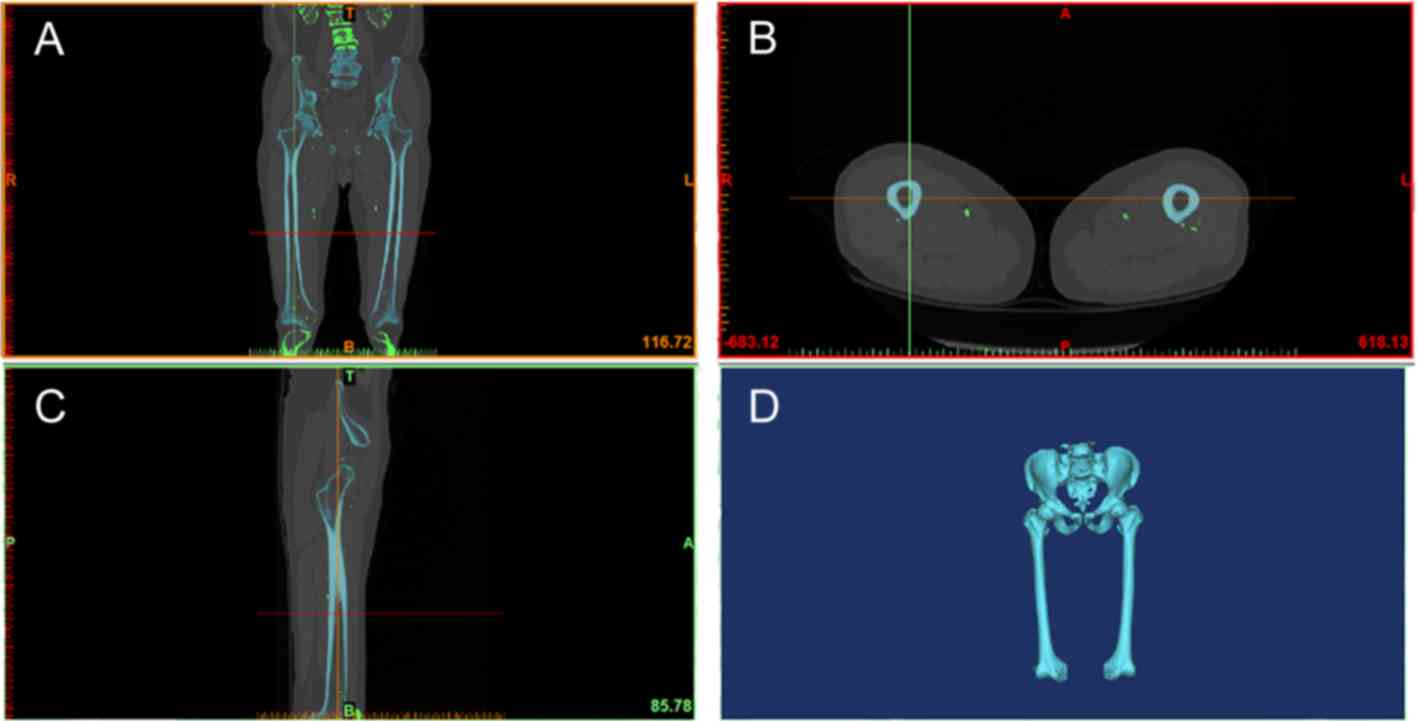Characterization of novel intramedullary nailing method for treating femoral shaft fracture through finite element analysis
- Authors:
- Published online on: May 18, 2020 https://doi.org/10.3892/etm.2020.8763
- Pages: 748-753
-
Copyright: © Cui et al. This is an open access article distributed under the terms of Creative Commons Attribution License.
Metrics:
Total
Views: 0 (Spandidos Publications: | PMC Statistics:
)
Total PDF Downloads: 0 (Spandidos Publications: | PMC Statistics:
)
Abstract
Femoral shaft fracture is one of the most common types of fracture encountered in the clinic. For certain complex femoral shaft fractures, the traditional intramedullary nail may not provide sufficient stability. Therefore, novel intramedullary nail systems are required. The femur 3D model and the internal fixation model were designed using Mimics 17.0 (Materialise), Geomagic Studio 2012 (Raindrop) and Solidwork 2016 (Dassault) software. The validity of the models was verified through comparison with previous data in silico. To further simulate the comminuted femoral shaft fracture, the novel and traditional type of intramedullary nail system were included in the finite element analysis with the software. The displacement and stress distribution of the two internal fixations were compared using Abaqus 6.14 (Dassault) software. The effectiveness of the model was verified. The stress at the fixed end of the novel intramedullary nail system was greater than that at the fixed end of the traditional intramedullary nail system. However, the displacement of the novel intramedullary nail method was smaller than that of the traditional intramedullary nail. The novel intramedullary nail system features good stability and stress stimulation at the broken end, which is beneficial for bone healing. The present study may provide a theoretical basis for the selection of a means of internal fixation in the clinic.













